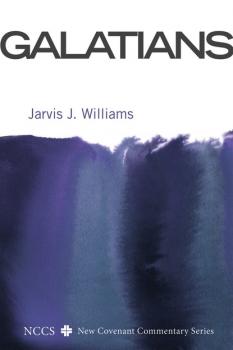ТОП просматриваемых книг сайта:
Jarvis J. Williams
Список книг автора Jarvis J. WilliamsАннотация
Jarvis Williams' commentary on Galatians is a commentary of one of Paul's most rhetorically charged and polemically sharp letters. Williams writes a commentary of the letter, not a commentary of commentaries. He grounds the letter in grammatical-historical exegesis, seeking to help readers understand Paul's Greco-Roman and Second Temple Jewish context of the letter. Additionally, the book seeks to move from exegesis to application in a few places in the commentary. The strength of the commentary is that it offers a lucid and concise exegesis grounded in Paul's first century context and applicable for twenty-first century readers.
Аннотация
In an age in which scholars continue to produce books on the nature and significance of Jesus's death, books that often assume the Old Testament cult was the New Testament authors' primary background for their conception of Jesus's death, Jarvis J. Williams offers a fresh and novel contribution regarding both the nature of and background influences behind Paul's conception of Jesus's death. He argues that Paul's conception of Jesus's death both as an atoning sacrifice and as a saving event for Jews and Gentiles was significantly influenced by Maccabean Martyr Theology. To argue his thesis, Williams engages in an intense exegesis of 2 and 4 Maccabees while also interacting with other Second Temple Jewish texts that are relevant to his thesis. Williams further interacts with relevant Old Testament texts and the key texts in the Pauline corpus. He argues that the authors of 2 and 4 Maccabees present the deaths of the Jewish martyrs during the reign of Antiochus Epiphanes IV as atoning sacrifices and as a saving event for Israel. He further argues that, although the Old Testament's cultic language certainly influenced Paul's understanding of Jesus's death at certain junctures in his letters, the Old Testament cult alone-which emphasized animal sacrifices-cannot fully explain why or even how Paul could conceive of Jesus's death, a human sacrifice, as both an atoning sacrifice and a saving event for Jews and Gentiles. Finally, Williams highlights the lexical, theological, and conceptual parallels between Martyr Theology and Paul's conception of Jesus's death. Even if scholars disagree with Williams's thesis or methodology, serious Pauline scholars interested in the background influences behind and the nature and significance of Jesus's death in Paul's theology will want to interact with this work.
Аннотация
In Christ Died for Our Sins, Jarvis J. Williams argues a twofold thesis: First, that Paul in Romans presents Jesus' death as both a representation of, and a substitute for, Jews and Gentiles. Second, that the Jewish martyrological narratives in certain Second Temple Jewish texts are a background behind Paul's presentation of Jesus' death. By means of careful textual analysis, Williams argues that the Jewish martyrological narratives appropriated and applied Levitical cultic language and Isaianic language to the deaths of the Torah-observant Jewish martyrs in order to present their deaths as a representation, a substitution, and as Israel's Yom Kippur for non-Torah-observant Jews. Williams seeks to show that Paul appropriated and applied this same language and conceptuality in order to present Jesus' death as the death of a Torah-observant Jew serving as a representation, a substitution, and as the Yom Kippur for both Jews and Gentiles. Scholars working in the areas of Romans, Pauline theology, Second Temple Judaism, atonement in Paul, or early Christian origins will find much to stimulate and provoke in these pages.



